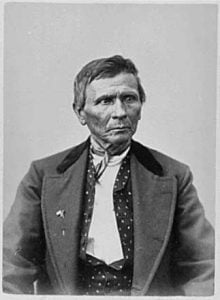Treaty of September 29, 1817
Articles of a treaty made and concluded, at the foot of the Rapids of the Miami of Lake Erie, between Lewis Cass and Duncan McArthur, commissioners of the United States, with full power and authority to hold conferences, and conclude and sign a treaty or treaties with all or any of the tribes or nations of Indians within the boundaries of the state of Ohio, of and concerning all matters interesting to the United States and the said nations of Indians on the one part; and the sachems, chiefs, and warriors, of the Wyandot, Seneca, Delaware, Shawanese, Potawatomees, Ottawas, and … Read more





